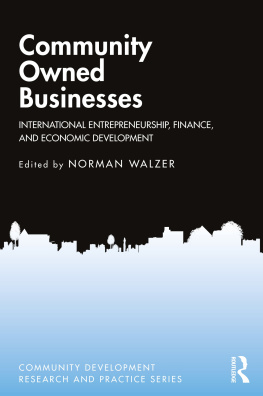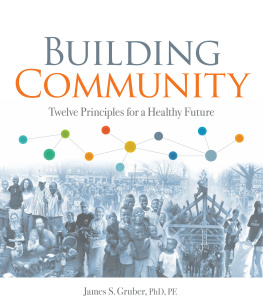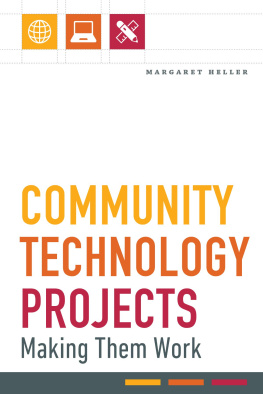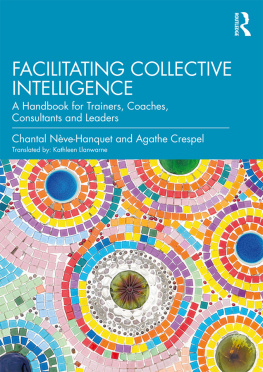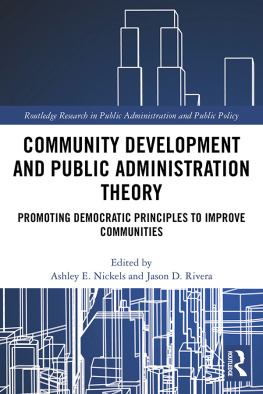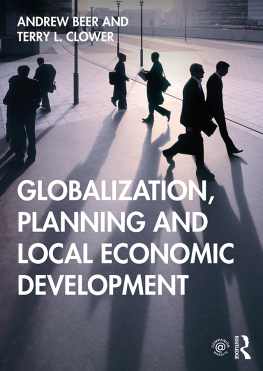
Collective Impact and Community
Development Issues
Collective Impact is intended to help community leaders effectively engage participants in strategic planning initiatives and achieve desired results. It is a logical extension of, and builds on, earlier efforts that experienced difficulties helping groups implement actions identified in the planning processes. This book examines successful practices that apply Collective Impact principles to a variety of community development issues including reducing poverty and similar topics. Contributing authors also examine techniques used in working with local groups to facilitate effective changes in their communities.
The discussions focus on settings in which Collective Impact efforts are likely to succeed using a variety of case studies that vary by intent, purpose, and location. Discussions of involvement by community and campus partnerships, regional planning organizations, and other groups can affect the ways in which Collective Impact principles are applied and how well they work. The discussions conclude with transformational changes within Collective Impact, moving from the individual to the system and future directions for Collective Impact approaches. Practitioners and scholars alike will find the discussions of various approaches and outcomes using Collective Impact useful in designing future efforts to bring about community change.
This book was originally published as a special issue of the journal Community Development.
Norman Walzer is Senior Research Scholar in the Center for Governmental Studies at Northern Illinois University, USA.
Liz Weaver directs the Learning Centre at Tamarack Institute, Canada.
Catherine McGuire was with the Bush Foundation when this book was compiled.
Collective Impact and Community
Development Issues
Edited by
Norman Walzer, Liz Weaver and Catherine McGuire
First published 2018
by Routledge
2 Park Square, Milton Park, Abingdon, Oxon, OX14 4RN, UK
and by Routledge
711 Third Avenue, New York, NY 10017, USA
Routledge is an imprint of the Taylor & Francis Group, an informa business
2018 Community Development Society
All rights reserved. No part of this book may be reprinted or reproduced or utilised in any form or by any electronic, mechanical, or other means, now known or hereafter invented, including photocopying and recording, or in any information storage or retrieval system, without permission in writing from the publishers.
Trademark notice: Product or corporate names may be trademarks or registered trademarks, and are used only for identification and explanation without intent to infringe.
British Library Cataloguing in Publication Data
A catalogue record for this book is available from the British Library
ISBN 13: 978-1-138-08117-8
Typeset in Myriad Pro
by RefineCatch Limited, Bungay, Suffolk
Publishers Note
The publisher accepts responsibility for any inconsistencies that may have arisen during the conversion of this book from journal articles to book chapters, namely the possible inclusion of journal terminology.
Disclaimer
Every effort has been made to contact copyright holders for their permission to reprint material in this book. The publishers would be grateful to hear from any copyright holder who is not here acknowledged and will undertake to rectify any errors or omissions in future editions of this book.
Contents
Citation Information
The chapters in this book were originally published in Community Development, volume 47, issue 2 (2016). When citing this material, please use the original page numbering for each article, as follows:
Chapter 1
Collective impact approaches and community development issues
Norman Walzer, Liz Weaver and Catherine McGuire
Community Development, volume 47, issue 2 (2016), pp. 156166
Chapter 2
Community-campus partnerships, collective impact, and poverty reduction
Karen Schwartz, Liz Weaver, Natasha Pei and Annie Kingston Miller
Community Development, volume 47, issue 2 (2016), pp. 167180
Chapter 3
The why and how of working with communities through collective impact
Jeff Raderstrong and Tynesia Boyea-Robinson
Community Development, volume 47, issue 2 (2016), pp. 181193
Chapter 4
Community indicators and collective impact: facilitating change
Danielle M. Wood
Community Development, volume 47, issue 2 (2016), pp. 194208
Chapter 5
Collective impact facilitators: how contextual and procedural factors influence collaboration
Rebecca J. Gillam, Jacqueline M. Counts and Teri A. Garstka
Community Development, volume 47, issue 2 (2016), pp. 209224
Chapter 6
Re-examining power and privilege in collective impact
Kimberly LeChasseur
Community Development, volume 47, issue 2 (2016), pp. 225240
Chapter 7
Using collective impact in support of communitywide teen pregnancy prevention initiatives
Thomas W. Klaus and Edward Saunders
Community Development, volume 47, issue 2 (2016), pp. 241258
Chapter 8
Collective impact capacity building: Finding gold in Southwest Florida
Cindy Banyai and Dave Fleming
Community Development, volume 47, issue 2 (2016), pp. 259273
Chapter 9
Possible: Transformational change in collective impact
Liz Weaver
Community Development, volume 47, issue 2 (2016), pp. 274283
For any permission-related enquiries please visit:
http://www.tandfonline.com/page/help/permissions
Notes on Contributors
Cindy Banyai is Principal Consultant at Banyai Evaluation & Consulting, USA.
Tynesia Boyea-Robinson is Chief Impact Officer at Living Cities, New York, USA.
Jacqueline M. Counts is Director of the Center for Public Partnerships and Research, University of Kansas, USA.
Dave Fleming is based at Fleming Consulting, USA.
Teri A. Garstka is a Researcher at the Center for Public Partnerships and Research, University of Kansas, USA.
Rebecca J. Gillam is based at the Center for Public Partnerships and Research, University of Kansas, USA.
Thomas W. Klaus is an adjunct faculty member at Eastern University, College of Business and Leadership, USA.
Kimberly LeChasseur is Assistant Research Professor with the Center for Education Policy Analysis, University of Connecticut, USA.
Catherine McGuire was with the Bush Foundation when this book was compiled.
Annie Kingston Miller is Assistant AESP Co-ordinator at Carleton University, Canada.
Natasha Pei is Community Animator at Vibrant Communities Canada, Hamilton, Canada.
Jeff Raderstrong is Program Associate for the Integration Initiative, Living Cities, New York, USA.
Edward Saunders is Associate Professor at the University of Iowa School of Social Work, USA.


